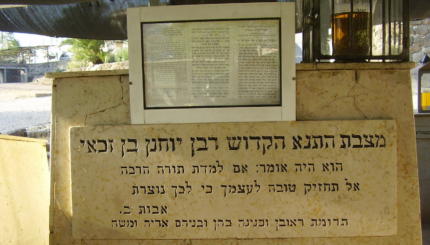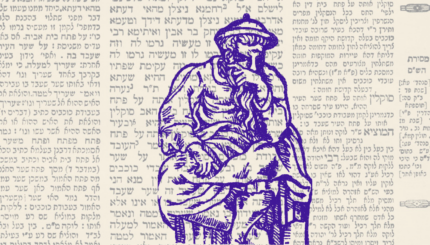The Talmudic rabbis whose views are recorded in the Talmudic literature are called Tannaim and Amoraim. Both these terms are also found in the Talmud in connection with learning activity. In this context, a Tanna (‘rehearser’ or ‘teacher’) was a functionary who rehearsed opinions and statements of the teachers of the first two centuries CE; an Amora (‘expounder’) was a different functionary, whose job it was to explain to the assembly the words of a contemporary sage, the latter making only a series of brief rulings which the Amora would then explain in detail.
But, in the later passages of the Talmud, both these names were adopted for the two sets of teachers mentioned in the first sense above. The name Tanna was given to the teachers who flourished in Palestine in the first two centuries CE and whose views appear in the Mishnah and other literature from this period. The name Amora was given to the expounders of the Tannaitic teachings.
The Amoraim belong both to Palestine and Babylon down to the end of the fifth century CE. Thus, in the most common usage, the Tannaim are the Palestinian teachers of the first two centuries and the Amoraim the Palestinian and Babylonian teachers from the third to the fifth centuries CE. In the discussions of the Babylonian Talmud, for example, where two different teachers are referred to in the Mishnah, the first is called the Tanna Kama (‘the first Tanna’).
With your help, My Jewish Learning can provide endless opportunities for learning, connection and discovery.
A Hierarchical System
The general principle followed in the Talmudic arguments is that an Amora is not at liberty to disagree in matters of law with a Tanna unless he can quote another Tanna in support. This principle was no doubt established after the Mishnah had acquired canonical status, so that teachers belonging to the Mishnaic period, whether or not their opinions were actually recorded in the Mishnah, came to enjoy a much greater degree of authority.
Thus one finds frequently in the Talmud an objection of the sort: how can Amora A say such-and-such, since a Tanna has said otherwise?
The reply is either that the Tanna said no such thing, his statement being reinterpreted, or that the Amora can produce the opinion of another Tanna who takes issue with the first.
Although the Tannaim enjoy greater authority than the Amoraim, the actual decisions in Jewish law are not rendered on the basis of Tannaitic statement in themselves but on these statements as expounded by the Amoraim.
Of the many Tannaim and Amoraim it is possible here to list only some of the more prominent, those whose names occur very frequently in the literature.
Major Tannaim
The members of the schools of Hillel and Shammai; Rabban Yochanan ben Zakkai; Rabban Gamaliel I and II; Rabbi Eliezer; Rabbi Joshua; Rabbi Ishmael; Rabbi Akiva and his disciples: Rabbi Meir, Rabbi Judah, Rabbi Jose, and Rabbi Simeon ben Yohai; Rabbi Judah the Prince, editor of the Mishnah, and his disciples: Rabbi Hiyya, Rabbi Hoshayah, and Rabbi Hanina.
Palestinian Amoraim
Rabbi Joshua ben Levi; Rabbi Johanan; Rabbi Simeon ben Lakish (usually referred to as Resh Lakish); Rabbi Eleazar ben Pedat; Rabbi Simlai; Rabbi Abbahu; Rabbi Ammi; Rabbi Assi; Rabbi Zera; Rabbi Jeremiah.
Babylonian Amoraim
Rav and Samuel; Rav Huna (the Babylonians did not have the full title ‘Rabbi’); Rav Hisda; Rav Judah ben Ezekiel; Rav Nahman; Rav Sheshet; Abbaye and Rava; Rav Pappa; Rav Ashi and Ravina.
The last two are said (in the Letter of Sherira Gaon) to have been the editors of the Babylonian Talmud but this cannot be taken too literally since both feature as ‘heroes’ of the work and are mentioned in the third person, apart from the fact that there are clearly to be detected Talmudic passages that obviously derive from a later period.
The problem of dating the various Tannaim and Amoraim is notoriously difficult, given the paucity of biographical detail and the legendary nature of some of the details that are given.
Reprinted from The Jewish Religion: A Companion, published by Oxford University Press.
Mishnah
Pronounced: MISH-nuh, Origin: Hebrew, code of Jewish law compiled in the first centuries of the Common Era. Together with the Gemara, it makes up the Talmud.
Talmud
Pronounced: TALL-mud, Origin: Hebrew, the set of teachings and commentaries on the Torah that form the basis for Jewish law. Comprised of the Mishnah and the Gemara, it contains the opinions of thousands of rabbis from different periods in Jewish history.



